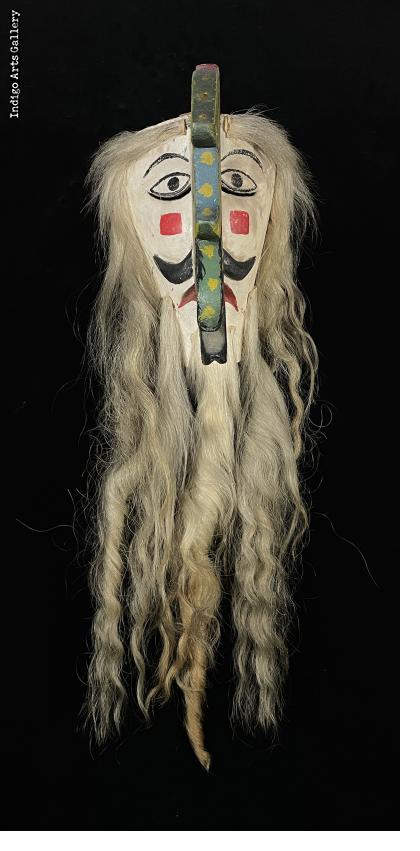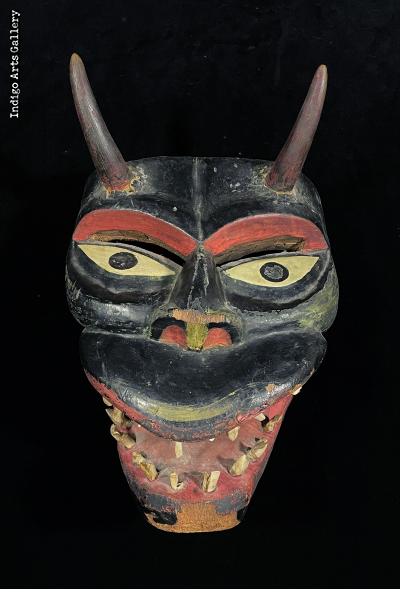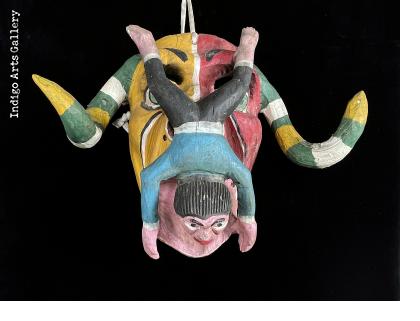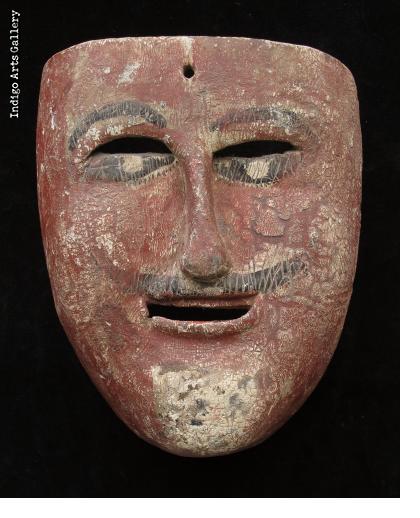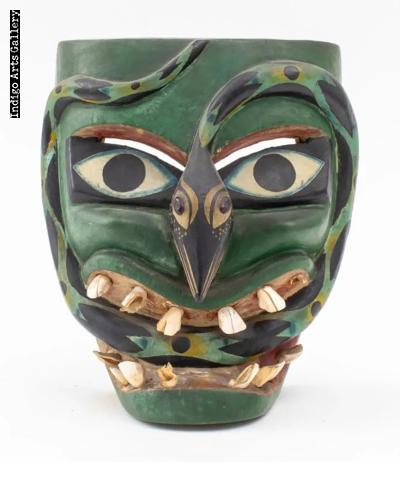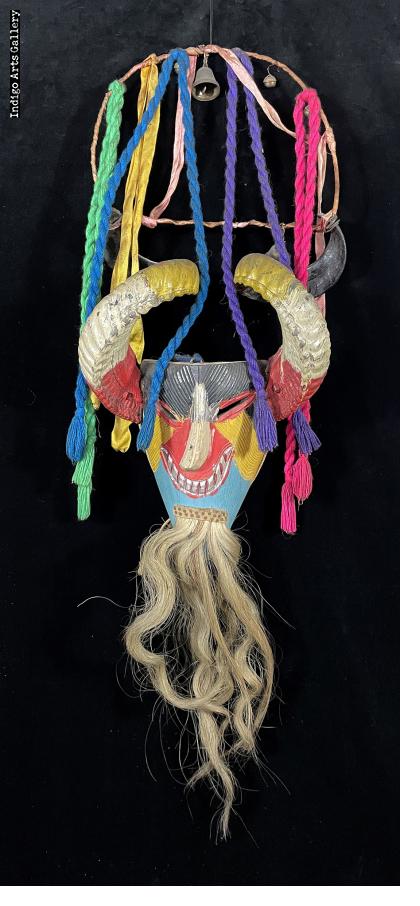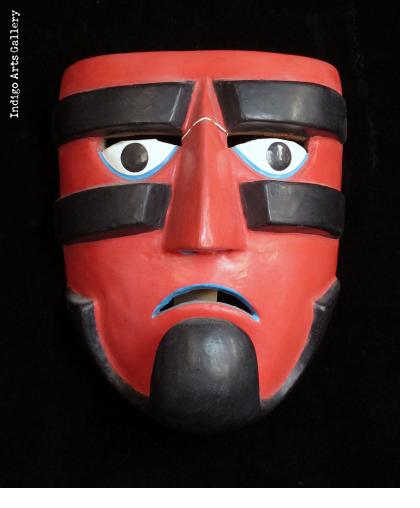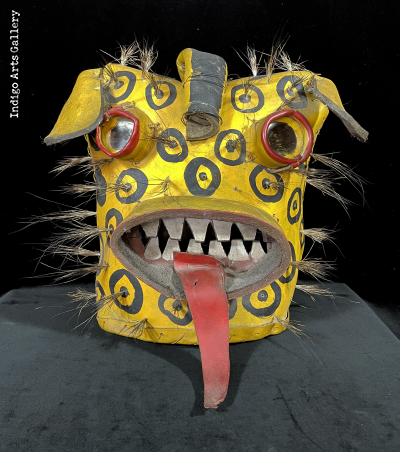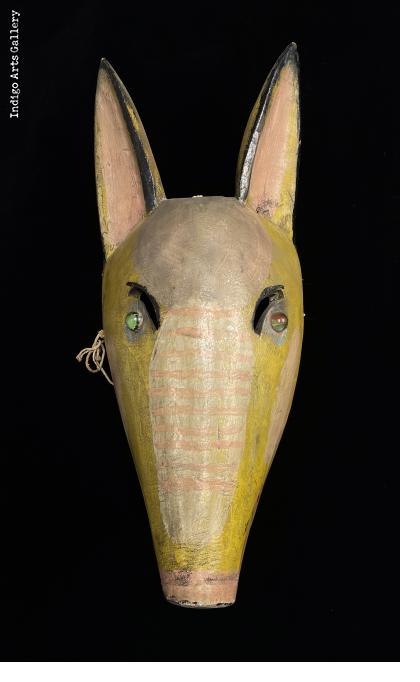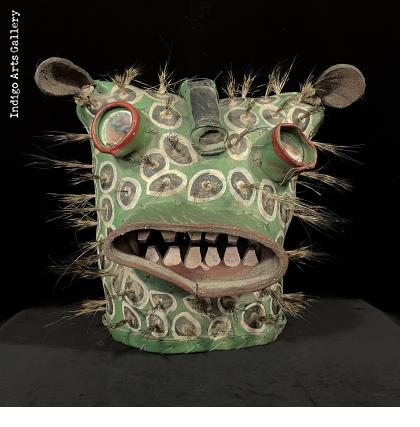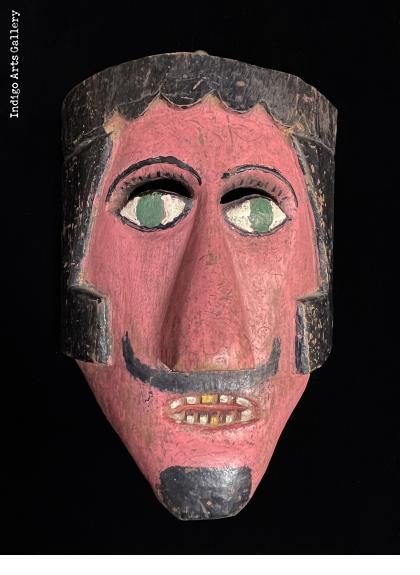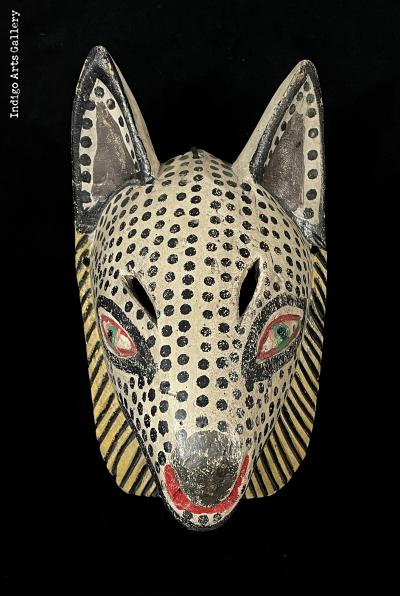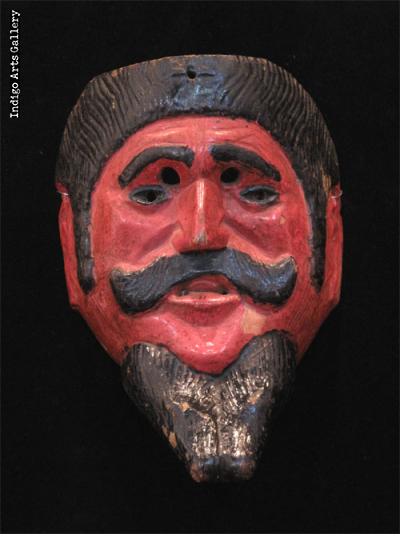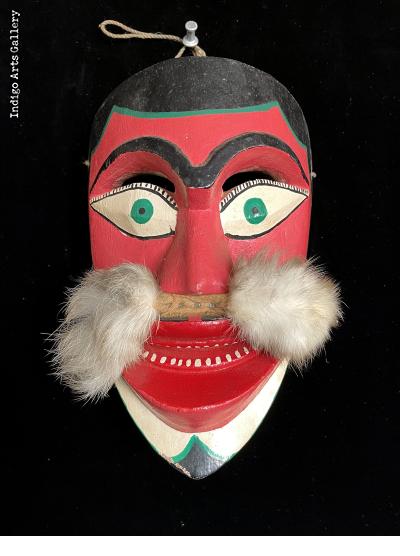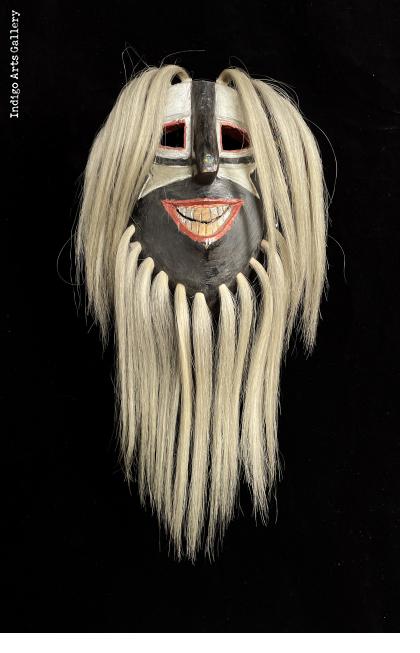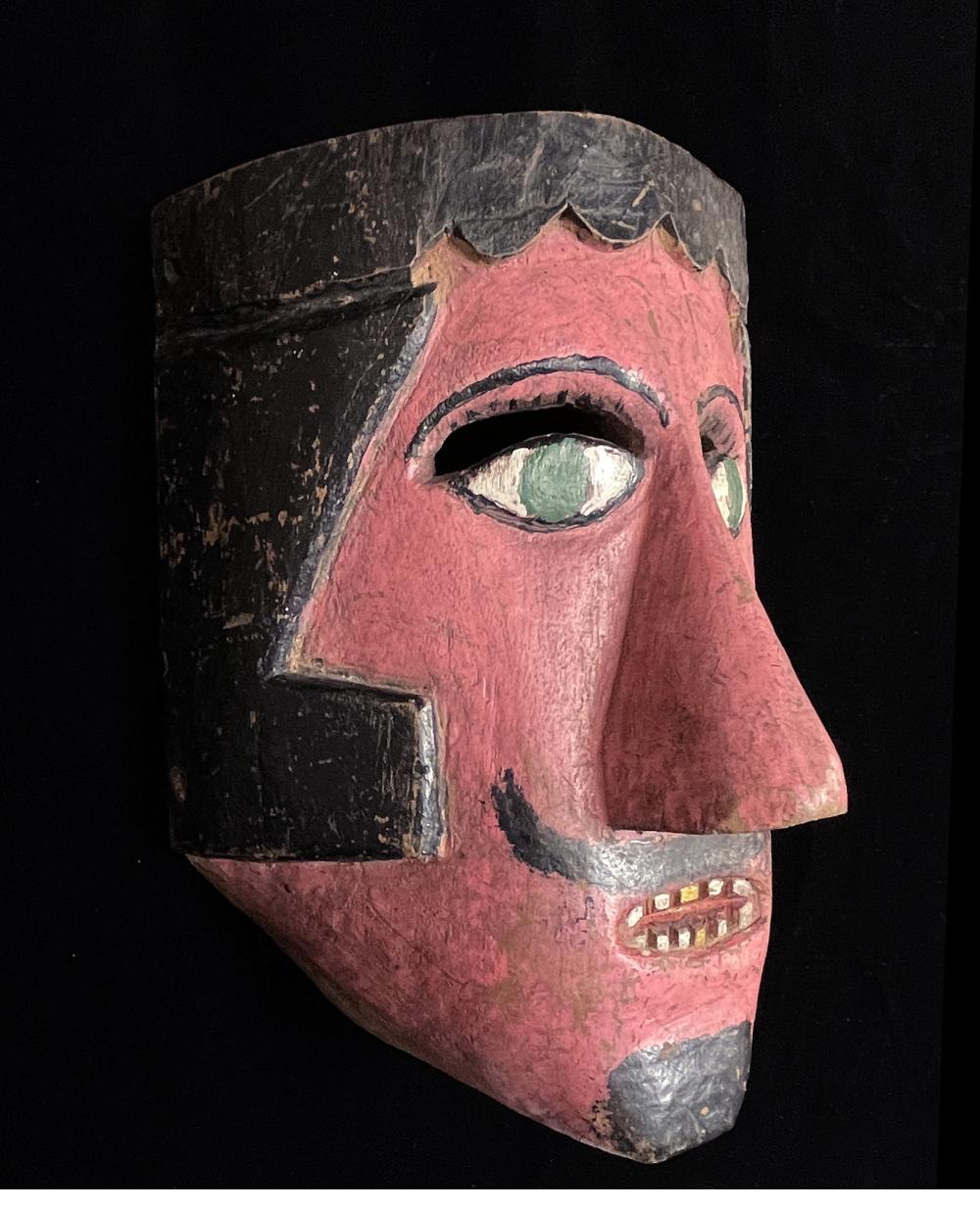
Drawing on roots in both pre-Columbian Meso-America and Europe, las mascaras have long been used in the celebration of the popular holidays of Carnival, Christmas and the Dias de los Muertos (Days of the Dead), as well as such specific festival dances as the Dance of the Tigres, the Dance of the Conquest, the Dance of the Tejorones, the Dance of the Mexicanos (in Guatemala) and the Dance of the Moors and the Christians.Indigo Arts' first show of Mexican masks was in 1987. In addition to Indigo Arts own collection, it has been a privilege to show works from many other distinguished collections. The current selection includes masks from the collection of the late Canadian painter Gordon Rayner and his wife, Kate Regan Rayner, as well as the collection of the legendary Mexican collectors Jaled Muyaes and Estela Ogazon.
The Mexican, whether young or old, criollo or mestizo, general or laborer or lawyer, seems to me to be a person who shuts himself away to protect himself: his face is a mask and so is his smile. In his harsh solitude, which is both barbed and courteous, everything serves him as a defense: silence and words, politeness and disdain, irony and resignation.... He builds a wall of indifference and remoteness between reality and himself, a wall that is no less impenetrable for being invisible. The Mexican is always remote, from the world and from other people. And also from himself.
Octavio Paz in The Labyrinth of Solitude, 1961
*The First Mascaras exhibit at Indigo Arts was in 2010.

